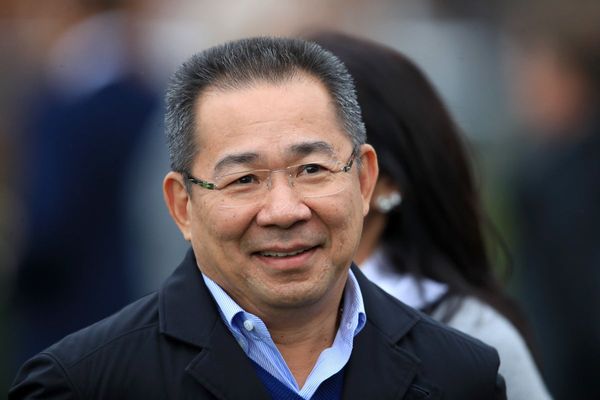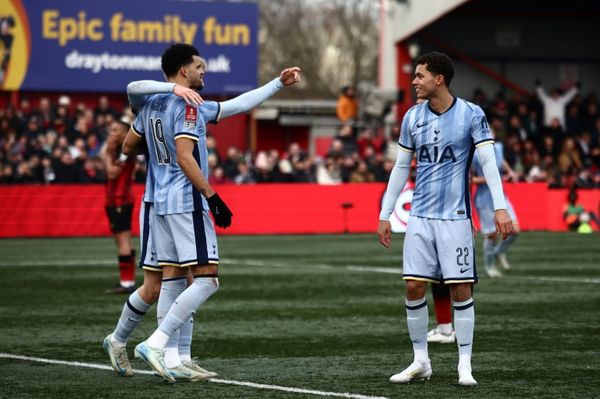
Australia’s public schools are in crisis.
Teachers nationwide have been shouting about this for more than a decade. There are no teachers. Our students are falling behind internationally. Many kids are depressed and school refusal is through the roof. It’s become so dire that even Education Minister Jason Clare agrees.
Over the past decade, right-wing responses have been to blame the teachers or claim there are too many soft skills being taught. Those advocating in the media for school reform have tended to argue about the funding disparity between public and private schools, and the fact our schools are many percentage points away from meeting the school resourcing standard.
These arguments ignore the reality that our current system values the education of some young Australians more than others — and the numbers obfuscate and distract from the true rot in the sector: class segregation.
We have one of the most robust private education sectors in the world, and it’s hard to argue, especially following a recent Four Corners investigation into allegations of harassment and discrimination at Sydney’s Cranbrook School, that this is doing our society any good.
Private schools don’t need tweaks or reforming; they need to be abolished.
No teachers, no resources
Our teachers are overworked, overwhelmed, burnt out and undervalued — and the numbers often cited are egregious. In New South Wales and Western Australia, shortages of more than 2,000 teachers were reported at the end of 2023. In Victoria, 800 jobs remained unfilled across the state when students returned from the summer (now reduced to 795 at the time of writing, including 14 principals).
This shortage is being felt across the board, but the pain is sharpest at schools in our most vulnerable communities, such as mine, where six teachers have returned from retirement this year and we still have seven unfilled full-time jobs, with no applicants in sight.
In the decade following the 2012 Gonksi review — which assessed school funding and depicted a system characterised by alarmingly declining test scores and increasing educational inequality — funding of private schools has increased at twice the rate of public. Not only did the review’s warnings go unheeded, but successive governments have worked in tandem to accelerate the trend. In Victoria and NSW in 2021, five elite private schools spent more on new facilities than governments spent on 3,372 public schools combined.
These numbers are shameful, but while they liven up discussions in staff rooms, they’re not effective at creating change. There are deeper issues at play. For every cartoonishly posh school in Kew or Bellevue Hill charging well over $30,000 tuition a year, there are five or more smaller, lower-fee private schools that cost $5,000 a year that compete for teachers and students across Australia’s less affluent areas.
These schools are often as materially scruffy as the fee-free public school down the road, with similar performances in metrics like NAPLAN and ATAR. Despite this, parents flock to these independent private schools in droves, with enrolments ticking up 14.1% over the past five years, while enrolments at Catholic private schools increased by 4.8% in the same period. Yet despite recent cost of living pressures, enrolments in public schools only grew by a measly 0.7% over the past five years, well below the average growth for all schools of 3.5%.
Paying for a peer group
We are certainly not getting richer, particularly those of us young enough to have kids starting school for the first time, so why might cash-strapped parents be willing to spend an ever-increasing portion of their disposable income on a product that isn’t measurably “better”?
One reason is that private schools have marketing departments, but a more potent force is that middle-class parents in Australia consider privately educating their children a cultural norm.
Australia is one of the richest countries in the world, and we have one of the highest percentages of private-school-educated young people in the world — 36%, with an increase of 4 percentage points over the past 20 years. In a country like the United States, where there are roiling debates about school choice and rampant social inequality, only 10% of students attended private schools as of 2022-23.
In Australia, enough parents send their kids to private schools that to do otherwise can feel inadequate or negligent. Parents care about their kids and they don’t want them to miss out, so they work two jobs and send their kids to private school so they can relax knowing they did everything they could.
In doing this, however, they inoculate themselves against needing to care about what happens to those who can’t afford what they can. They tap out, and if a third of our families tap out of public education, there becomes little political will left to make our public schools work. This is compounded by the fact that it’s the wealthier, powerful third — the parents who are also doctors and bankers and lawyers and politicians — who leave the public system first.
This means that in Australia we have two education systems — one for everyone, and one for the students whose parents believe that the one for everyone isn’t good enough. These latter children spend their formative years only associating with people like them, with limited mixing across class lines. Parents who send their kids to private schools aren’t necessarily paying for a better education — they are paying for their children to have access to a more powerful peer group.
This has been true for decades. Parents today who attended public schools grew up knowing the state didn’t care about their education, and so it is with today’s young people. They know this in their bones as they walk through the gates. As teachers, we see it in their eyes, but we also see it in our declining PISA scores, our school refusal rates, completion rates, our problems managing behaviour, and the upticks in youth crime statistics. These kids know that their country cares about other children more than them.
Education for all
In a debate about the value of VCE in my Year 12 English class last week, one student asked me if “a 40 here is really worth the same as a 40 at a private school in Melbourne”. The truth is that it’s worth so much more when it’s been fought for so much harder, but there aren’t the structures in place for us to see that.
The rampant, chronic underfunding of our public schools is a blight on our national identity, especially for a country that lionises the idea of a “fair go”. But simply reallocating funding to be more equitable will not address the class segregation corroding Australia’s school system.
So what can we do? Well, we can start by phasing out the federal taxpayer dollars pouring into the coffers of private schools — a minimum of $17.8 billion in 2024. If someone wants to pay for their child to attend a school where they won’t fall in with “the wrong crowd” or the other classist monikers we reserve for poor kids, they can pay for it themselves. We could then invest that money back into our public schools, targeting funding to the communities like mine who need it most.
We could ban the new construction of private schools that are de facto designed to siphon away from the public sector the families who have the resources to invest in their children’s education, robbing their local school of their assistance. A better-resourced public sector could be designed to provide different educational options for different kids, and we could repurpose some of those three-storey performing arts centres into facilities accessible to everyone.
These solutions aren’t easy — they require long-term thinking, values-based politics and bravery. The issue has been ignored for so long that it is entrenched. Decades of underfunding and neglect have made our public schools less competitive and less attractive to middle-class parents. Decades of conversations during school pick-ups and dinner parties have made parents increasingly anxious that their child might get left behind.
Even if we did manage to abolish the grossly inequitable privatised model we currently have, our schools would still be segregated by postcode; by the capacities of parents to pay “top-up fees” to give their local public school an edge. But unless our leaders dare to acknowledge the injustices baked into the system, more kids will leave the public system, more burnt-out public school teachers will leave the profession, and more of our next generation will leave the education system feeling as though it wasn’t designed for kids like them.
If governments, state and federal, are serious about fixing public education, they must consider the radical choice of abolishing the private education sector. Until they do so, they will never truly ensure that our schools are about every child learning, growing and flourishing.
Is getting rid of private schools really the answer? Let us know your thoughts by writing to letters@crikey.com.au. Please include your full name to be considered for publication. We reserve the right to edit for length and clarity.







